I still remember my first yoga class. It was a beginners’ class and as we moved into our first downward dog, the instructor cued: “Engage your core!” Instead of my muscles flexing, my brain wondered “What does that mean?” And, as I looked around I could see many newbies like me had the same puzzled look on their faces.
I mean, really? What does it mean to engage your core in yoga? And, why do teachers love saying that?
In this article, we’ll explore what the core is, why engaging it matters, how to do it right, and tips for utilizing it in your yoga routine.
Let’s start with the meaning of the cue itself and the reasoning behind it.
Alignment Cue Explained: “Engage Your Core”
What does “engage your core” actually mean? It’s one of those phrases yoga instructors love to say (guilty of it myself!), but it can be a bit difficult to translate the cue into “this is what I should make my muscles do!”
When a yoga teacher says “engage your core,” they’re talking about activating the muscles in your midsection—yes, the abs, but beyond them, the core also includes your lower back, hips, and even your pelvic floor.
The core includes many sets of muscles that wrap around your torso and pelvis. When you “engage your core,” you focus and consciously work on contracting all these muscles.
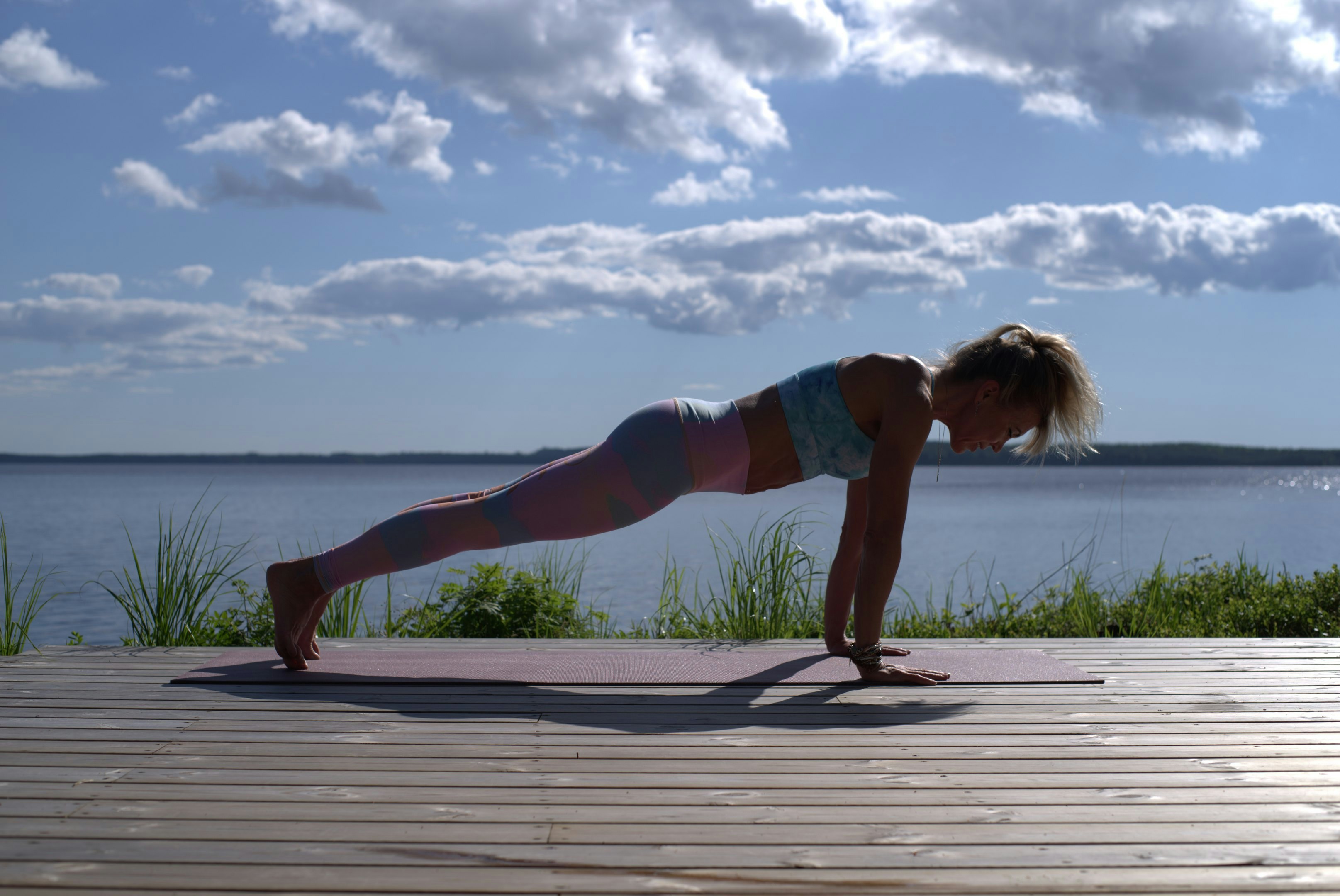
Why Is Core Important in Yoga?
Well, engaging your core helps stabilize your body, giving you a solid foundation. I think it’s best compared to a load-bearing wall that is an active structural element of a building, holding the weight of the elements above it and distributing that weight to the ground. In this analogy, our core has the same function.
Imagine trying to build a tower on a wobbly base—it’s not going to maintain balance, right? The same goes for your body. A strong, engaged core supports your spine and posture, improves your balance, and helps prevent injuries.
In yoga, a strong core is essential for maintaining proper alignment in both seated and standing asanas. It will keep you steady and grounded, allowing you to move with more control and grace.
A Little Bit of Anatomy
Alright, let’s pull back the curtain and take a peek at what’s really going on inside our bodies when we engage our core. Understanding the anatomy helped me visualize and feel the subtle differences in the muscles I was trying to engage. Perhaps it can help you, too.
Core Muscle Groups
The core is a whole team of muscles working together to support the body. The main players include:
- Rectus abdominis: These are your classic “six-pack” muscles. They run down the front of your abdomen and help you bend forward. Most abs exercises such as sit-ups and crunches target these muscles.
- Internal and external obliques: These muscles run diagonally along the sides and front of your abdomen. They help you twist and bend sideways. More importantly, they also help your lungs function more efficiently, which means they can improve your breathing. The stronger these muscles are, the easier it will be for you to inhale and exhale deeply.
- Transverse abdominis: Think of this as your body’s natural corset. This thin layer of muscles runs horizontally from your lower spine to your ribs and connects centrally at the front of the abdomen. They’re below the six-pack muscles and obliques, which is why they’re also called “the inner abs.” When you contract them, you might feel like a corset is tightening around your waist.
- Erector spinae: These muscles run along your spine and are key for keeping you upright and extending your back, i.e. maintaining a stable posture while standing or sitting.
- Multifidus: Small but mighty muscles that also run along your spine. They control the movement of individual vertebrae, helping you engage in fine movements.
- Pelvic floor muscles: As the name suggests, these muscles support your pelvic organs and play a crucial role in core stability. They line the base of your core and contribute to both postural and respiratory functions.
- Diaphragm: Yes, your main breathing muscle is part of the core too! It works with the abdominal muscles to stabilize your spine. It’s just another way in which a strong core helps you breathe better.
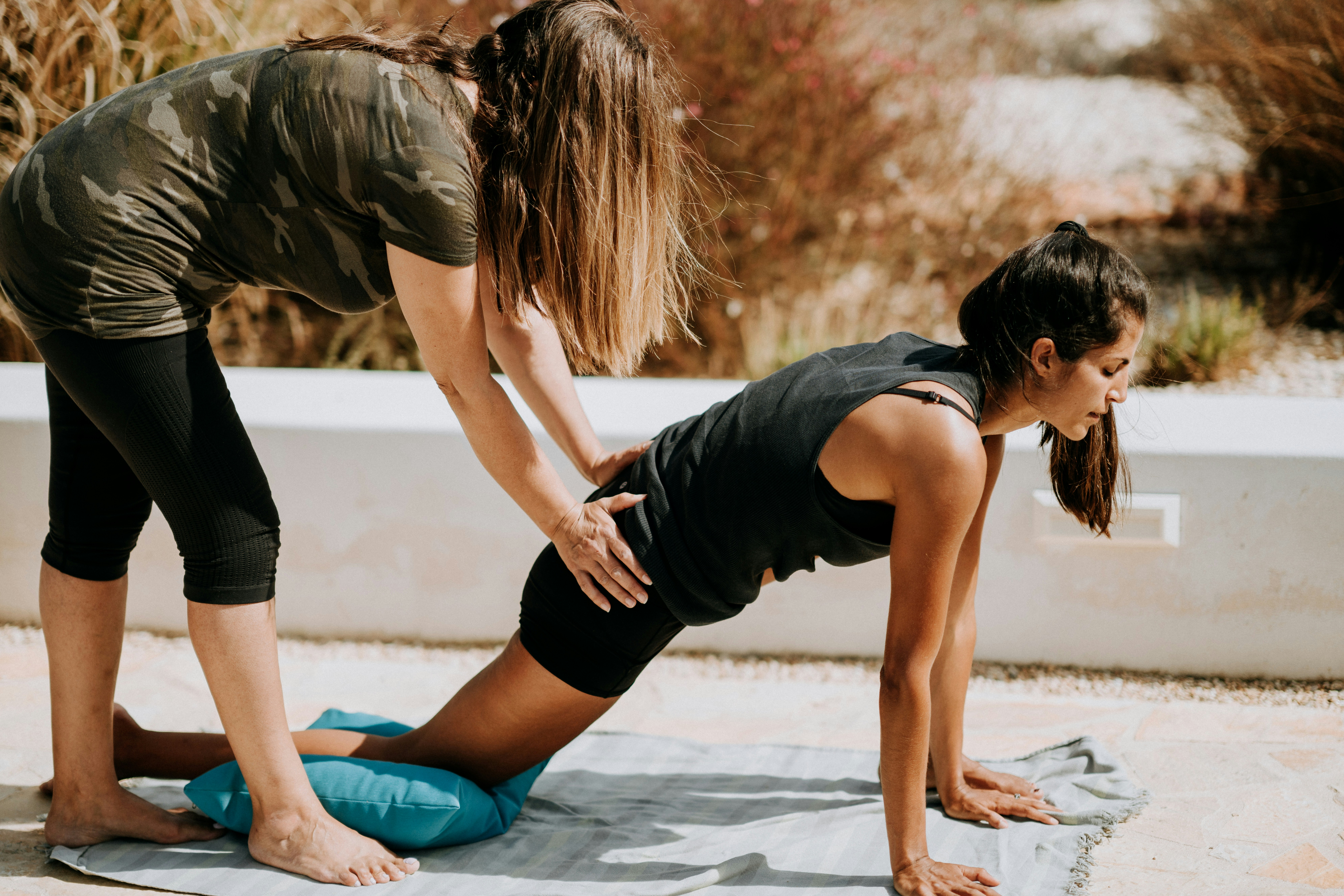
Anatomical Effects
When you engage your core, you’re activating all these muscles to work together. It’s the sense you get when you pull your belly button towards your spine – that’s another common cue many instructors use.
Anatomically, the stability coming from active core muscles protects your spine and internal organs, helps distribute weight evenly, and improves balance. It also reduces the risk of injury by preventing excessive strain on your muscles and joints.
Remember that load-bearing wall? When the core muscles are loose and weak, the overall structure – your posture – suffers. The muscles won’t be able to hold the weight of your body and will let you “hang” – putting too much pressure on the bones and pelvic floor, which may even lead to the compression of some internal organs and incontinence.
For instance, do you even feel tired after five minutes of keeping your back straight? This could be because your postural muscles are not strong enough to hold your body in a straight position. And, if you have perfectly chiseled six-pack abs, then you might have neglected the back, which would still mean an underdeveloped core and poor posture. When it comes to the core, it’s all about the balance between the front, back, top, and bottom muscles. I know, it sounds unbelievable to think that we might not have the strength to just stand properly upright for five minutes, but this just highlights how important it is to “engage your core” in yoga.
Core & Pelvic Floor Muscles
Let’s zoom in on a special relationship within your core – the connection between your core muscles and your pelvic floor muscles. This duo is particularly important in certain circumstances, like during pregnancy.
The pelvic floor muscles form a hammock-like structure at the base of the pelvis and support your bladder, intestines, and uterus, if you have one. They also interact directly with your transverse abdominus (the corset-like stabilizers) in your trunk. As a result, these muscles are crucial for maintaining continence and supporting regular daily activities for people of all genders.
For Pregnant Individuals
As a fetus grows and develops, pressure on the pelvic floor muscles increases due to added weight and volume. Strengthening these muscles is one of the best gifts you can give your body if you are pregnant! The pelvic floor is essential for managing the physical demands of the birthing process and for speeding up recovery postpartum.
A strong core may also alleviate common pregnancy aches and pains, reduce the strain on the lower back, and help with birthing, regardless of what kind of birth you have.
So, if you’re pregnant, planning to get pregnant, or just gave birth, following yoga practices that focus on the core and pelvic floor muscles is a great idea. To learn more about this topic, read our dedicated article on yoga and pregnancy by Julia Crouch.
For Everyone Else
Working on your pelvic floor muscles can help prevent or ease health issues, such as incontinence and back pain. Strengthening and stretching these muscles can also contribute to better athletic performance and reduce the risk of injuries. David’s series on activating the core and pelvic floor muscles will teach you how to use these muscles to protect your body from injury.
And, if you’re interested in learning more, at DoYogaWithMe we offer many tailored classes taught by seasoned instructors who are also experts in the field.
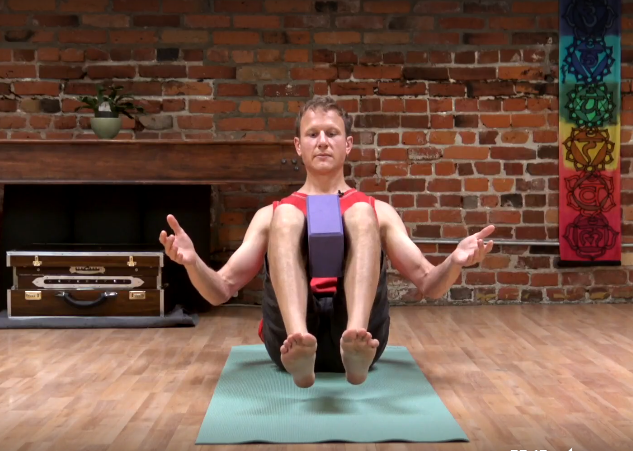
Do’s And Don’ts of Engaging Your Core
Now that you understand what “engaging the core” means and why it’s important, let’s focus on the actual execution – how to activate these muscles and what to do next time you hear your yoga teacher give the cue.
Do’s:
1. Visualize your core muscles
Close your eyes and try to picture all the muscles we’ve talked about so far inside your body. As you inhale and exhale deeply, try to visualize their movement. Then, when it feels right, try to voluntarily control them to further support your breathing. On your inhale, relax and loosen them to create space for more air to come in. Then, on your exhale, contract them and pull them inwards to help your body release all air.
Try out different visualization techniques.
2. Be gentle with yourself
Engaging your core should be a gentle tightening, not a full-on crunch. You should feel your muscles firm up slightly, providing support, but you should still be able to move and breathe comfortably. If you feel discomfort or pain, stop and don’t push any further.
3. Breathe Steadily
Unless the yoga instructor asks you to hold your breath as part of an exercise, you should be able to breathe steadily and naturally. Try to inhale deeply and exhale completely, allowing your diaphragm to move freely.
4. Maintain a neutral spine
In general, keep your spine in a neutral position. This means not over-arching your back or rounding your shoulders—unless performing a forward flexion or actively working to strengthen parts of the core. In some cases, this principle doesn’t apply. But, a neutral spine is a part of keeping a proper form, which helps distribute the work evenly across your core muscles. You can learn more about the importance of a neutral spine in one of Julia’s tutorials.
5. Practice regularly
Just like most things in life, core engagement is a skill you can improve with practice. Be patient and work on it consistently. The more you practice, the more natural it will feel.
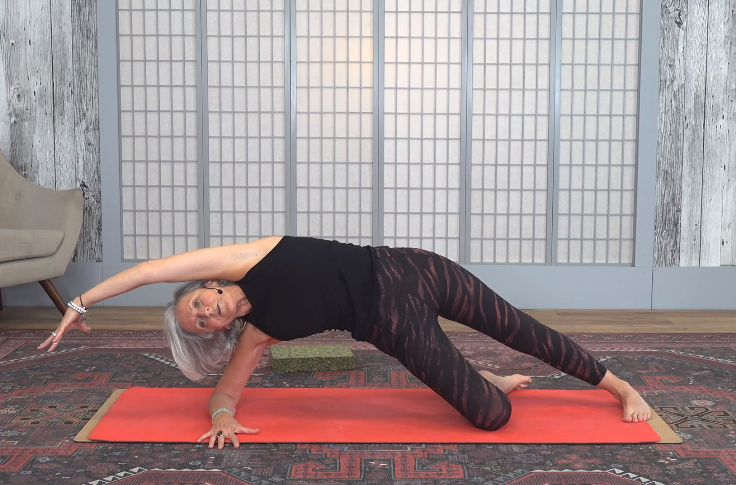
Don’ts:
1. Don’t suck in your stomach
Engaging your core doesn’t equal sucking your stomach in. Doing so may make you look slimmer, but this practice can lead to shallow breathing and tension in other areas of your body.
2. Don’t over-tighten
Avoid the temptation to clench your abs as hard as you can. Over-tightening will affect your breathing and you won’t be able to flow through the asanas. Plus, tightening your muscles too much can create pressure on your internal organs leading to discomfort and even pain. So, don’t do it. We want to be able to flow between engagement and release to safely allow for all of our body’s natural functions.
3. Don’t forget your back and pelvic floor
The abs are just one piece of the puzzle when it comes to core engagement. Remember to be mindful of and also activate your back muscles and pelvic floor for full support.
4. Don’t ignore pain
I said this before, but I feel it’s important to reiterate: if engaging your core causes pain, stop and reassess. Pain is a signal that something might be wrong—don’t ignore it!
Consulting a Professional
If you experience difficulty engaging your core and pelvic floor muscles, encounter pain during exercises and daily life, or simply wish to learn more about these essential muscle groups, we recommend consulting a professional.
Pelvic floor specialists and physiotherapists can provide personalized guidance, ensure you are performing exercises correctly, and address any specific concerns you may have.
Tips for Activating Your Core
Working on your core for the first time, especially on those deep abdominal muscles that you never even knew you had, is hard. The following tips can help you establish a mind-body connection, visualize these internal movements, and train your body on how to react when you move through the poses.
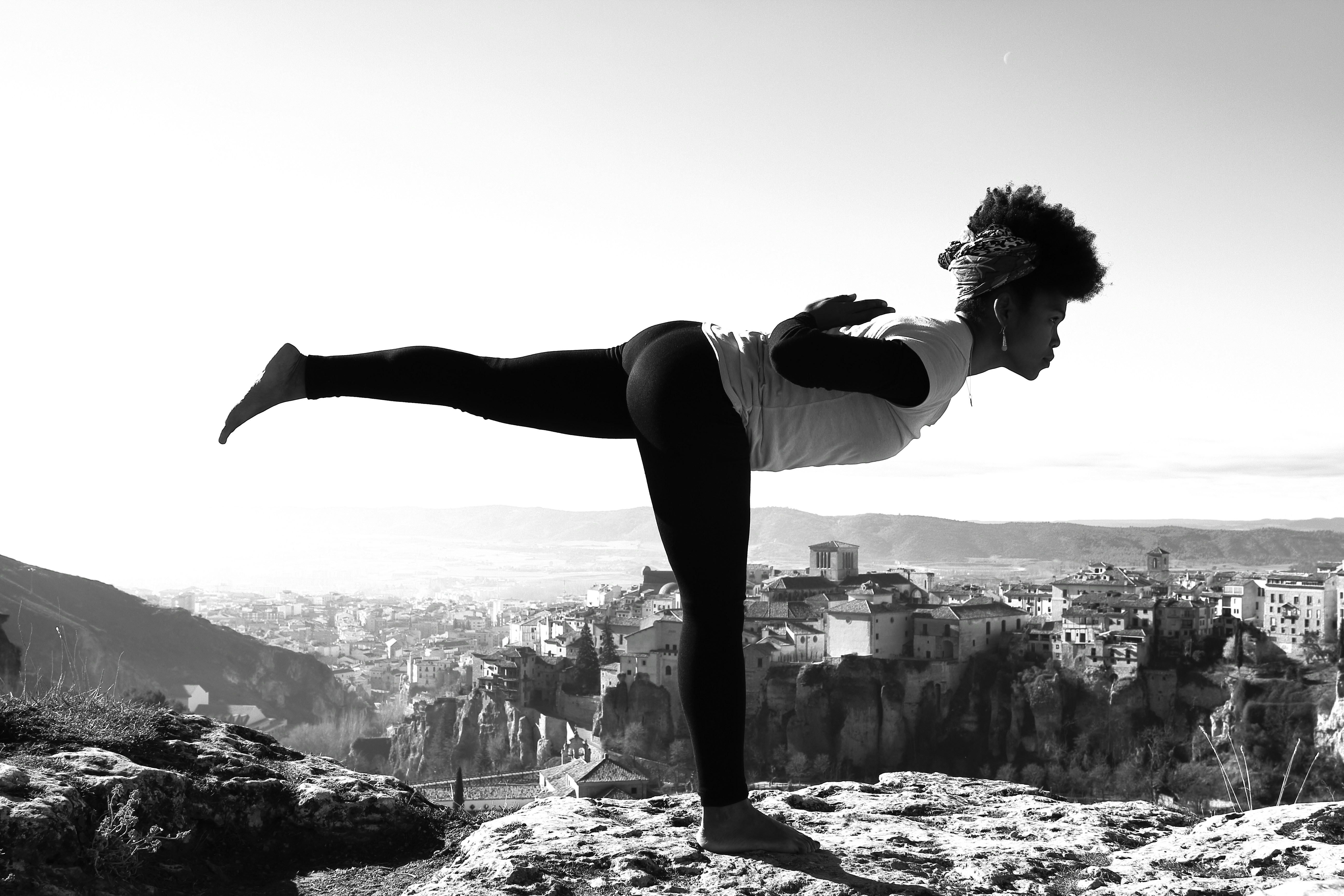
Increase Your Breath Awareness
Your breath is closely linked to your core muscles, which is why focusing on your breathing and increasing your breath awareness can also help you engage your core much more effectively.
One of the things you can do is diaphragmatic breathing. Place one hand on your chest and the other on your belly. Breathe deeply through your nose, feeling your belly rise as you inhale and fall as you exhale. As you get comfortable, start involving your core. Again, breathe deeply through your nose, but when you fill your chest, try to draw more air in with your belly.
On your inhale push your abdomen outwards to make room for even more air to come in. On the exhale, draw your belly button towards your spine, which supports the diaphragm in pushing all the air out.
Practice Nauli
Nauli is an advanced yoga technique that involves rolling and isolating the abdominal muscles. While it might take some time to master, practicing the initial steps can significantly improve your core awareness.
Begin by standing with your feet shoulder-width apart and your knees slightly bent. Place your hands on your thighs and exhale completely. Pull your abdominal muscles in and up towards your spine, holding the contraction for a few seconds. Release and repeat. This will help you feel the activation of your deep abdominal muscles.
You can also follow along with Crista in her fire class dedicated to the element, where she introduces the apan mudra, the purification mudra, and nauli kriya, or Julia’s morning class for nourishment.
Engage Your Core During Everyday Activities
Best results are achieved when you take the lessons you learn on the mat and you apply them in your everyday activities.
To make core engagement second nature, practice whenever you sit, stand, or do some walking. In other words, be mindful of the way you carry your body throughout the day and remember to alternate with relaxing your core engagement as well.

Top Classes to Strengthen Your Core
Finally, let’s roll out the mats and put what we’ve learned into practice. The following classes focus on the core and pelvic floor muscles:
1. Postnatal Yoga to Support Your Posture
This class, led by Julia, is designed to help new moms regain movement and strength in their bodies. It focuses on opening the chest and shoulders, which are often tight during the postnatal period while strengthening the postural muscles. It’s also a great class for anyone looking to learn more about full-core strength, or when recovering from surgery.
2. Core On the Floor
Kathy’s class targets both the core and pelvic floor muscles through a series of Pilates-inspired exercises. It’s a comprehensive workout aimed at building strength and stability in the midsection.
3. Core Fitness Flow
Another vigorous, high-energy class led by Josh combines core-focused yoga sequences with fluid movements to build strength and endurance. This class is perfect for those looking to enhance their overall fitness with a strong emphasis on core stability.
4. Mindful Core and Pelvic Floor
Through her grounding and empowering prenatal practice, Tara helps students connect with and activate the deep core and pelvic floor muscles as a way to improve strength and coordination.
5. Rising Strong: The Revolution
Inspired by Brené Brown’s Rising Strong process and led by Andrea, this challenging class is designed to push your limits with intricate balance sequences that engage the whole body, but especially the core. It helps build physical strength and mental resilience.











